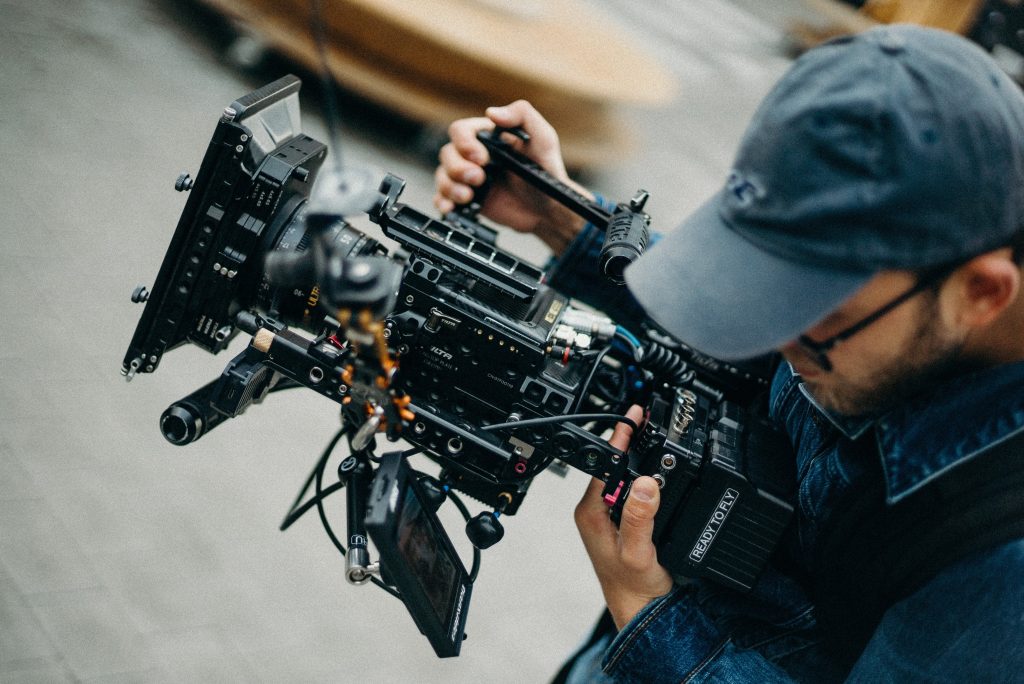Steven Spielberg is an iconic American filmmaker known for his unparalleled contributions to cinema. Renowned for his versatility, NYFA Guest Speaker Spielberg has directed and produced a wide range of blockbuster films, from the heartwarming E.T. the Extra-Terrestrial to the suspenseful Jaws and the historical masterpiece Schindler’s List.

With a career spanning several decades, he has earned numerous accolades, including multiple Academy Awards, and his impact on the film industry is immeasurable, making him one of the most influential and successful directors in Hollywood history.
Cinematography Techniques: How to Style Your Film Visuals like Steven Spielberg
From Jaws to The Color Purple, Raiders of the Lost Ark to Schindler’s List to the new West Side Story, Steven Spielberg has given us many of the most iconic moments in cinema. Today, we examine some of the specific cinematographic techniques he employs to achieve such spectacular results to help inspire your own film.
Sideways tracking shot.
A sideways tracking shot follows the movement of the characters. Although it is a classic technique, Spielberg makes it his own. Spielberg adds considerable visual texture to the shots by putting all manner of objects and extras between the camera and the two main subjects to enhance the richness of the frame and the visual perception of movement.
Spielberg also uses the variant of having the actors approach the camera after tracking, ending in a close-up, as exemplified by the scene in Jaws when the camera tracks Brody and his wife to the fateful boat.
Introducing a character.
Spielberg often uses either action or fraction (glimpses of body parts or features) to introduce his protagonists, and some of his most memorable introductions employ both. Think of one of the most iconic character introductions of all film time: Indiana Jones in the first Raiders of the Lost Ark.
The long take.
A long take, aka an “oner,” is a continuous shot played out in real time. Unlike other directors, Spielberg’s long takes tend to be less stylized and more emotionally driven. As this No Film School article puts it:
“Spielberg disguises these long takes in a number of ways, allowing audiences to become immersed in the dramatic energy of the scene without feeling the kinetic energy of the camera.”
Over the shoulder.
Over-the-shoulder shots are common enough in cinema, but Spielberg uses dramatic and claustrophobic shots to create effects that push the boundaries of classic cinematographic framing. The dramatic shot uses a wide lens, making the character in the foreground look bigger than the other character, which conveys a feeling of dominance. The claustrophobic shot increases the shoulder in the frame, pushing the main subject away from the center.
Frame within a frame.
A cinematic frame within a frame utilizes physical objects–mirrors, windows, doors, power lines–to divide the frame and create a striking composition. In “A.I. Artificial Intelligence,” Spielberg and his cinematographer, Janusz Kaminski, use a circular lamp fixture, and in “Minority Report,” they use a headset held by one of the characters in the foreground. The novelty of these framing devices suggests how you can use everyday objects for brilliant aesthetic effects.
Learn Cinematography Techniques at NYFA
At NYFA, aspiring cinematographers learn how to strengthen their skills in composition, lighting, and camera movement. Through hands-on projects and exercises, students create their own films and develop their knowledge of cinematography techniques. To learn more, explore our cinematography programs.
Header image via Cottonbro Studios.